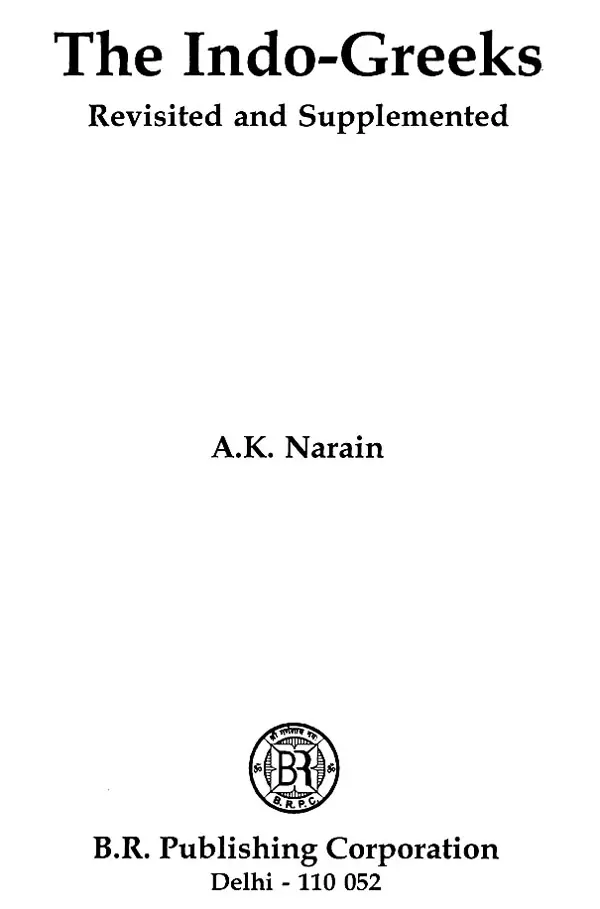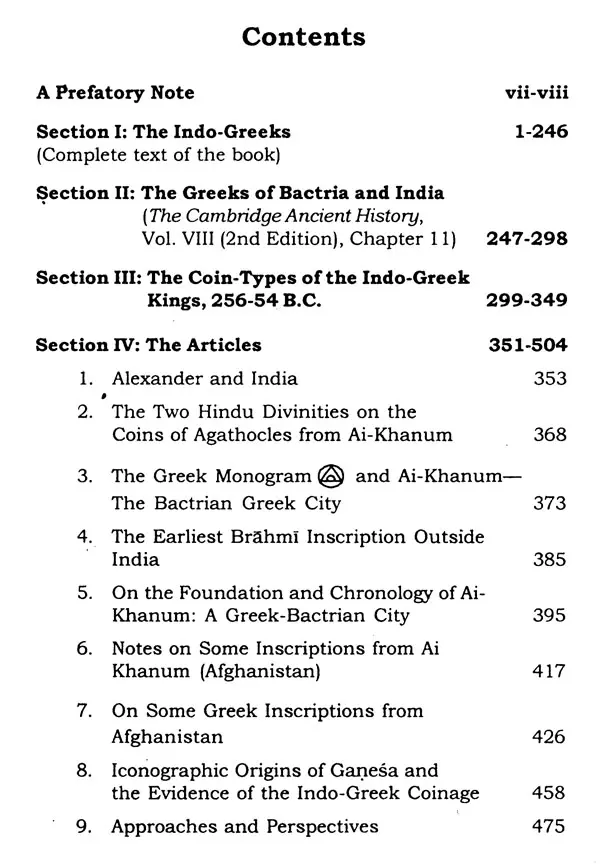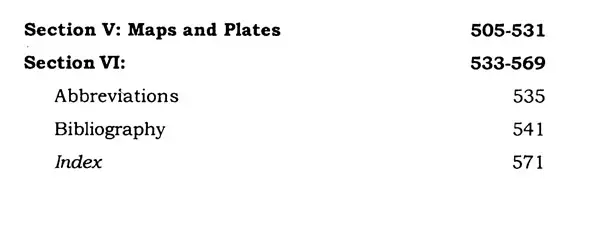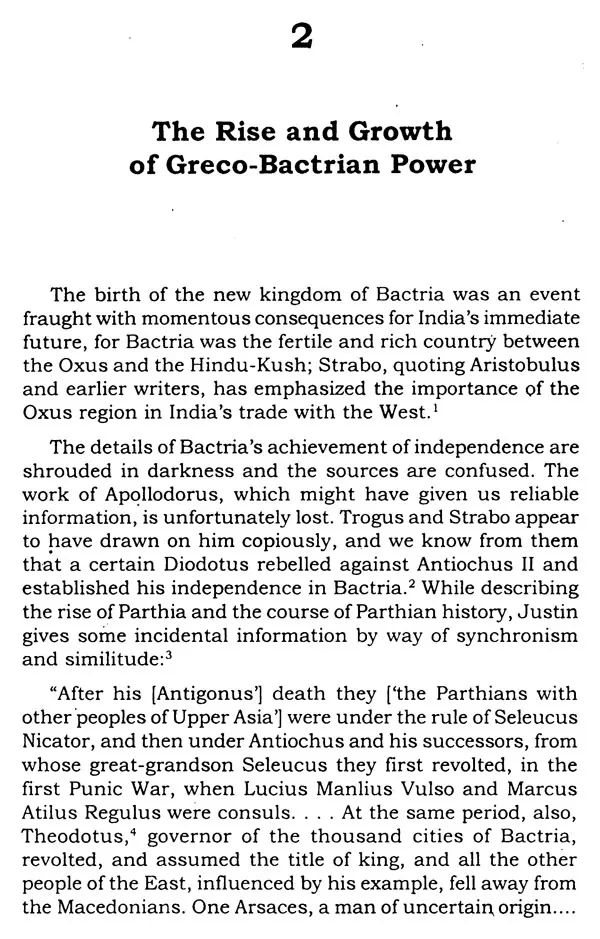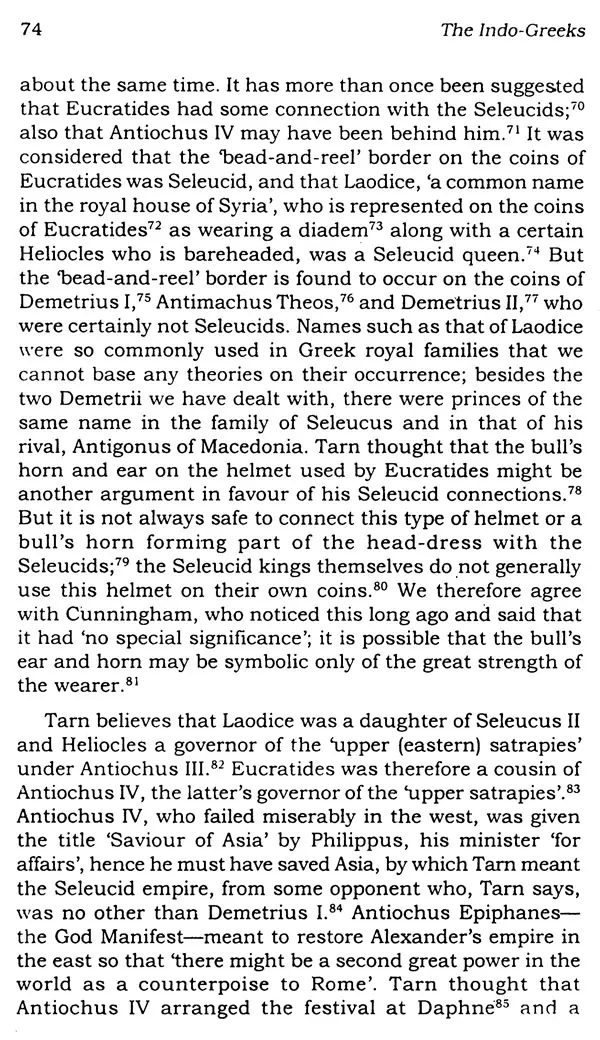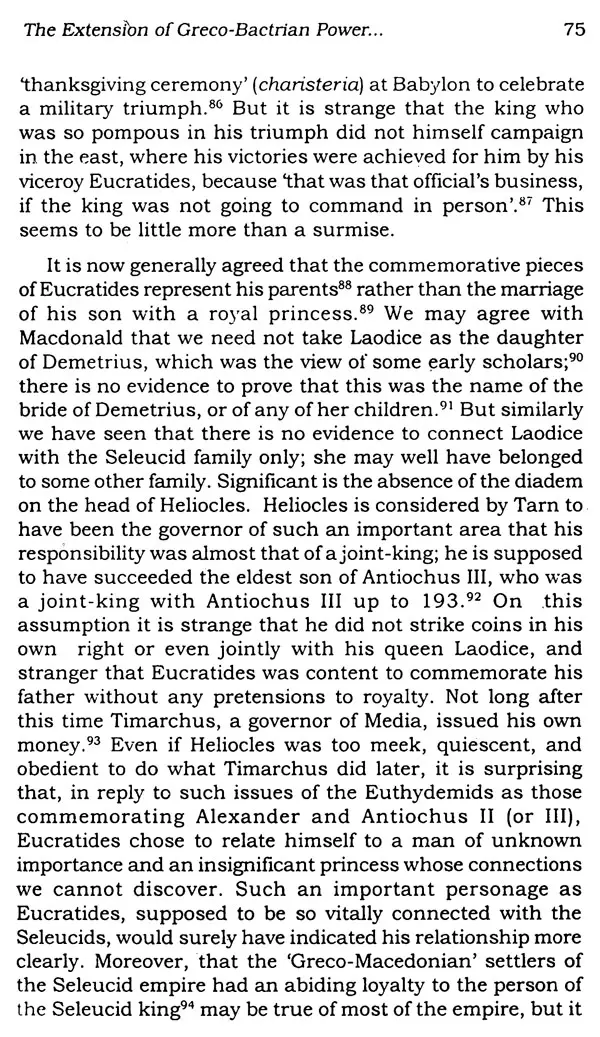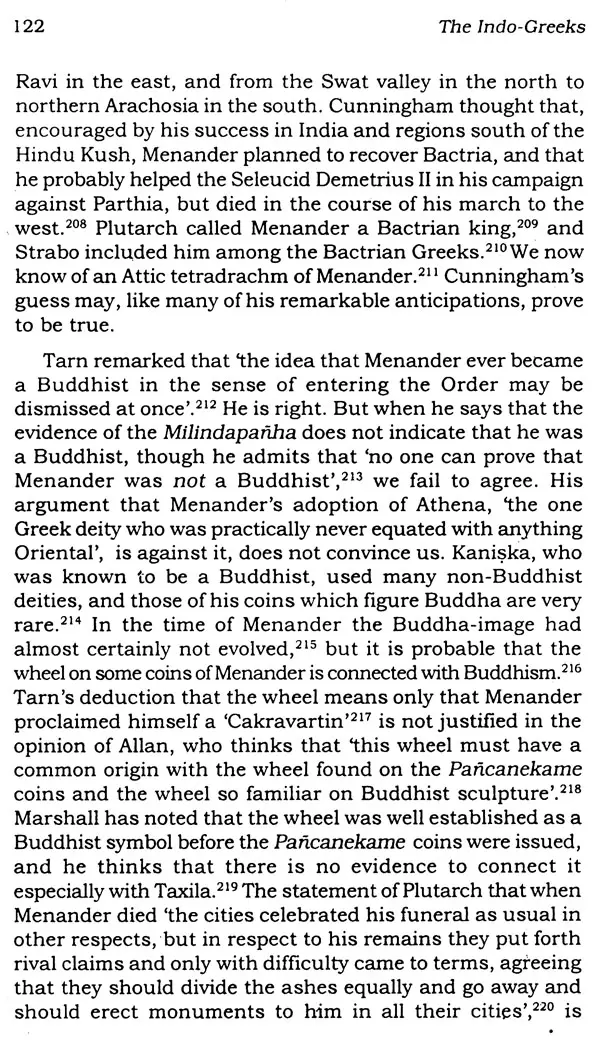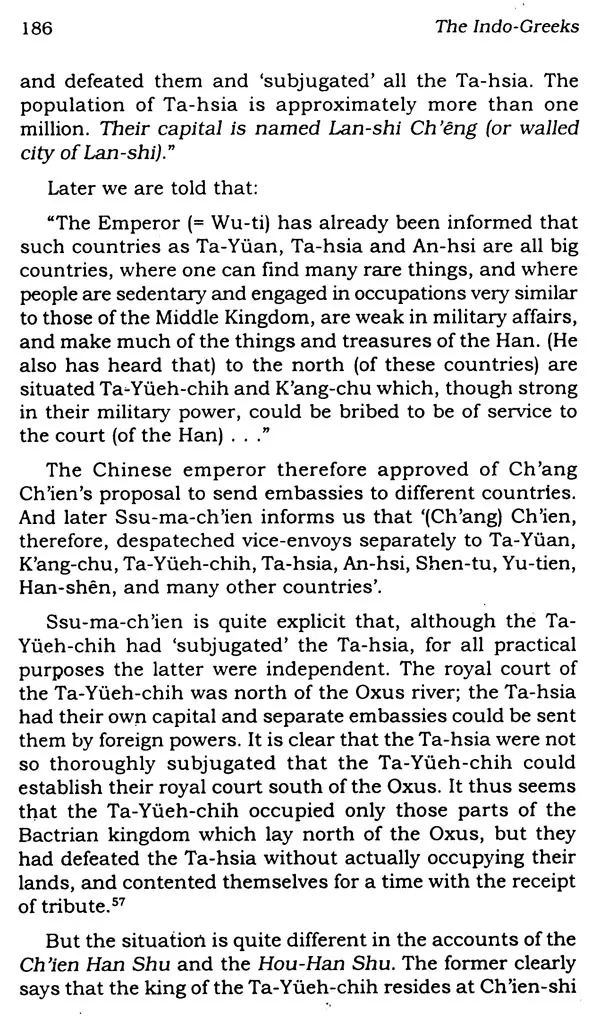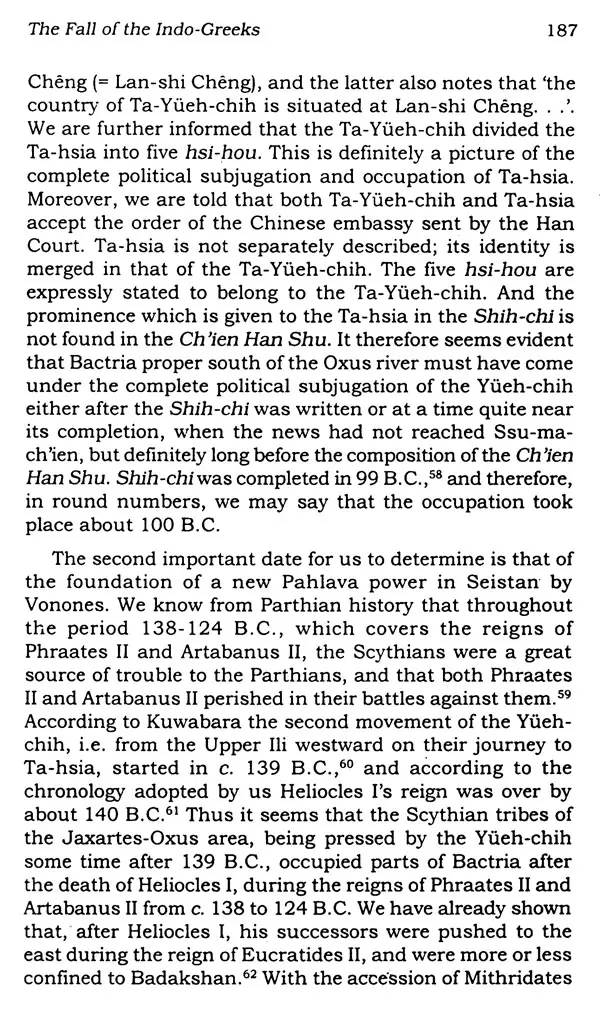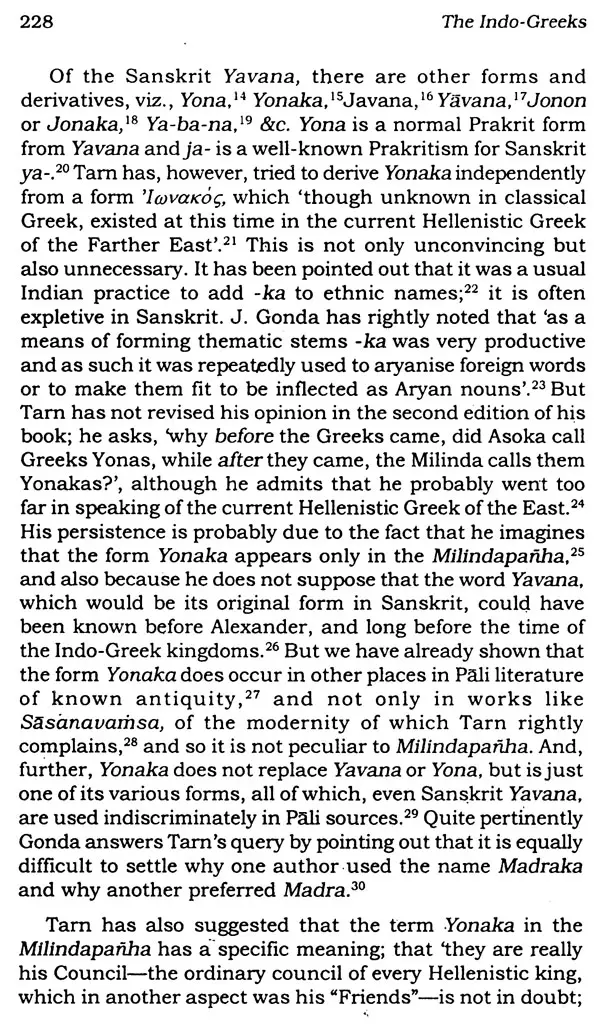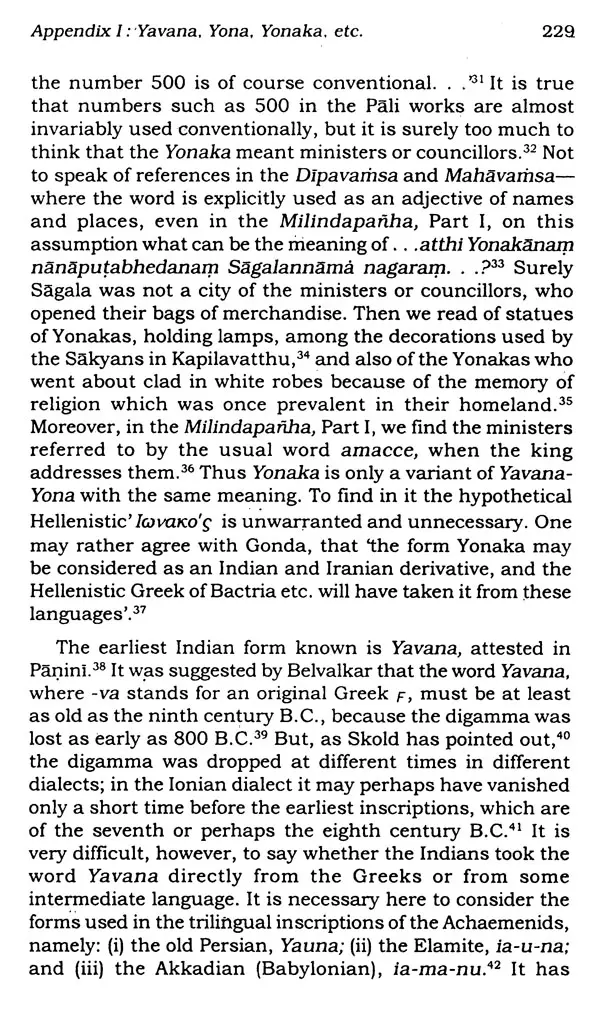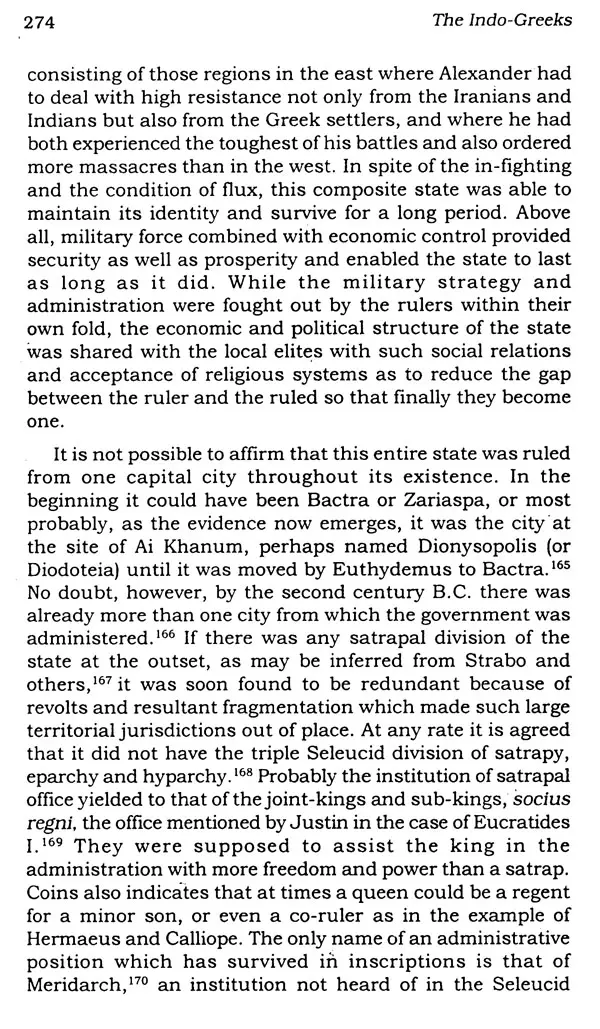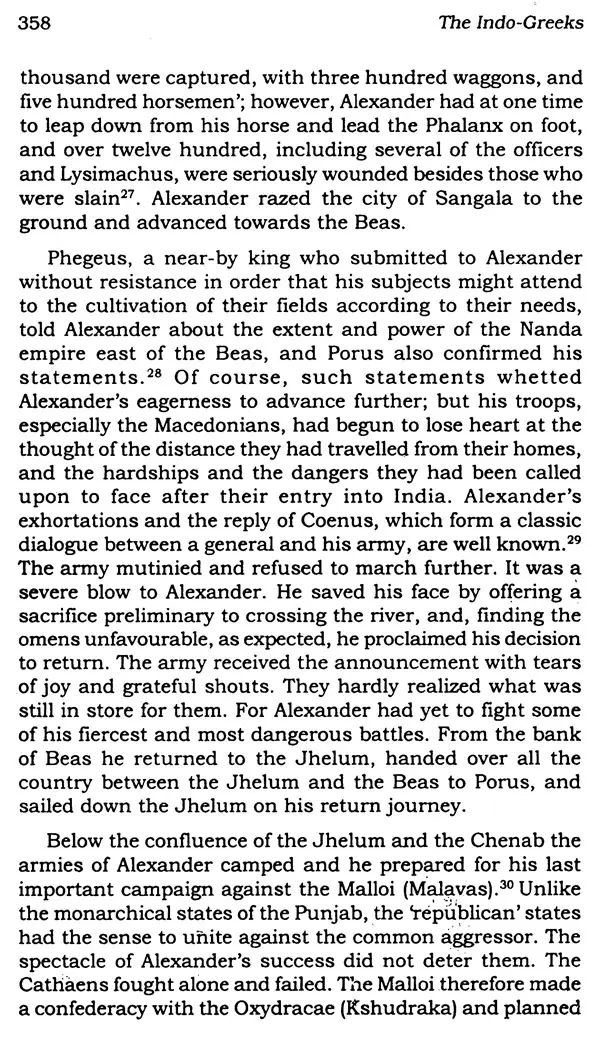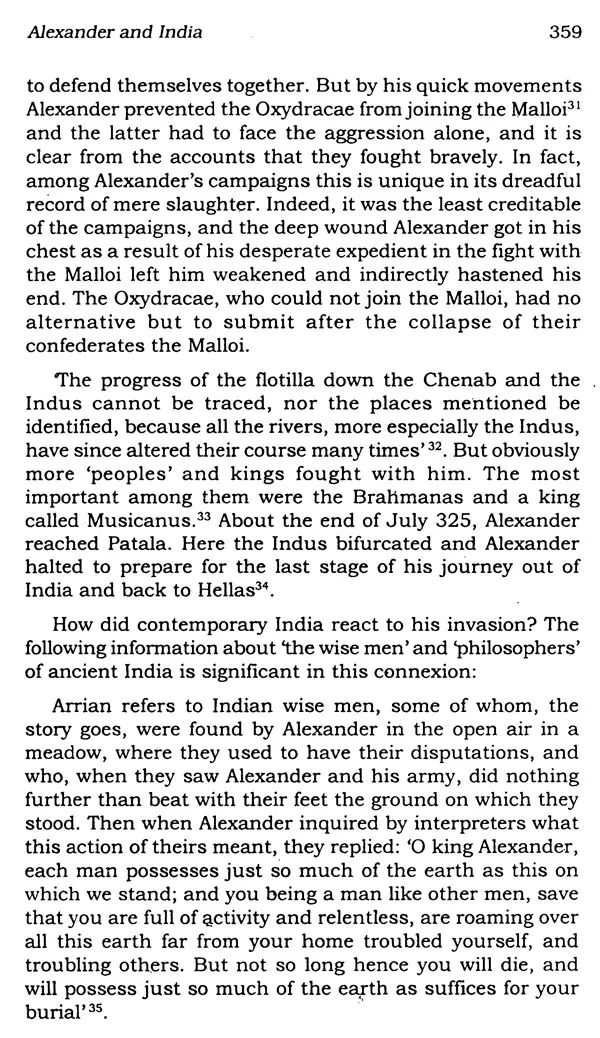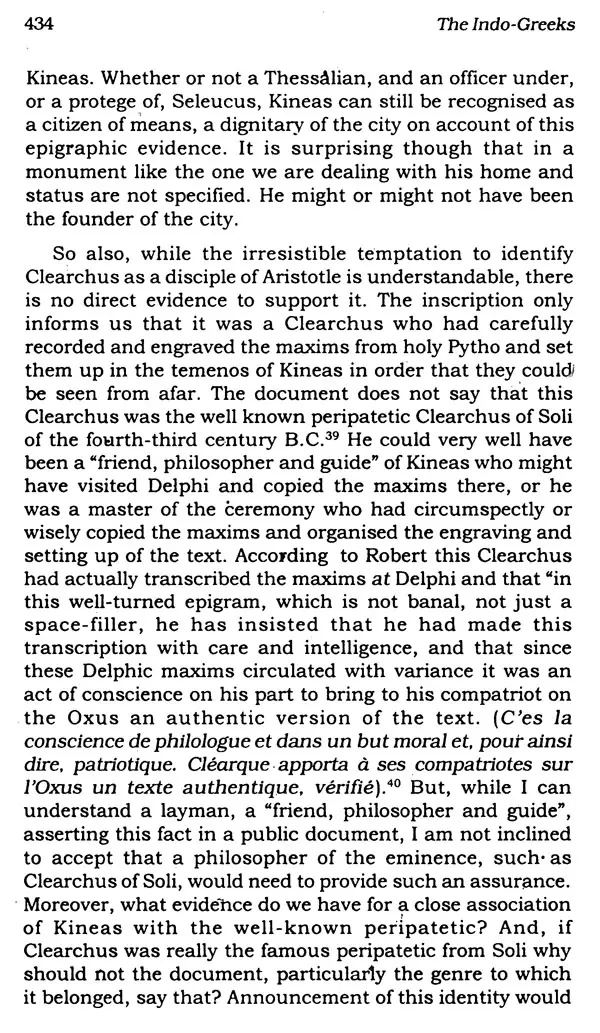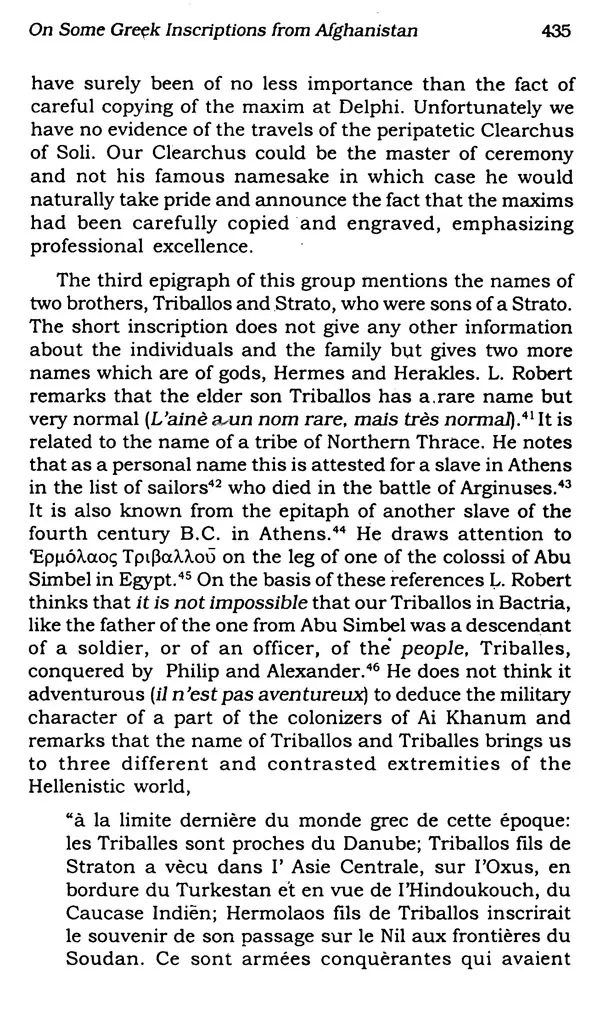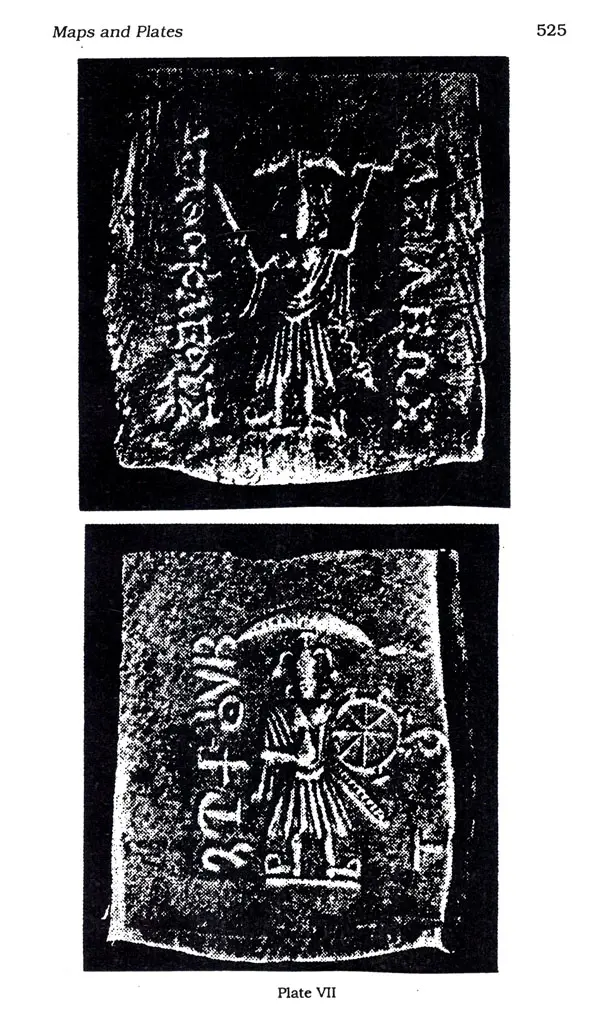
The Indo-Greeks Revisited and Supplemented
Book Specification
| Item Code: | UAP838 |
| Author: | A.K. Narain |
| Publisher: | B.R. Publishing Corporation |
| Language: | English |
| Edition: | 2020 |
| ISBN: | 9788176463492 |
| Pages: | 595 (Throughout B/w Illustrations) |
| Cover: | HARDCOVER |
| Other Details | 9.00 X 6.00 inch |
| Weight | 890 gm |
Book Description
This is the fifth printing of The Indo-Greeks (the first three were published in 1957, 1962 and 1980). This revisit of the original 1957 text is supplemented by later contributions made by the author. It includes a chapter published in The Cambridge Ancient History, Vol. VIII and some articles which take into account the archaeological findings at Ai-Khanum and results of interactions between the Greeks and Indians. It also includes the handy and useful Coin-types of the Indo-Greek Kings (published already 3 times). There is a consolidated Bibliography at the end along with few maps and illustrative plates.
This book deals with the remarkable story of the Graeco-Bactrian and Graeco-Indian peoples who interacted, and gradually became integrated, with the peoples and cultures of India. Until this book, the advanced study of this remarkable episode in the ancient history of Asia had been confined to European scholars. Narain is the first Asian historian to produce a monograph on the subject. This work, which has been translated into Hindi and Chinese, is based mainly on the coins which are their most important historical records, the classical literary sources in Sanskrit and Pali, Greek, Latin and Chinese, epigraphic documents and material evidence from archaeological excavations.
This book gives detailed and a reasonably accurate account of the vicissitudes of the Indo-Greek kingdoms and clears up many misconceptions The history of the Indo-Greeks is placed on firm basis of chronology, and is seen against more than one background-the world of the heirs of Alexander in western Asia, that of the successors of the Mauryas in India and the local elements in Bactria at the end of the Achaemenids.
The author feels that the recent discoveries at Ai-Khanum and other findings generally confirm and strengthen his conclusions about the Yavanas, that "they came, they saw, but India conquered"(The Indo-Greeks, p. 18 and Cambridge Ancient History.
Professor Awadh Kishore Narain is Emeritus Professor of History and of Languages and Cultures of Asia, University of Wisconsin, Madison (USA). Formerly he has been the Manindra Chandra Nandy Professor of Ancient Indian History, Culture and Archaeology at Banaras Hindu University, Varanasi (India).
Among numerous awards, fellowships, visiting professorships and other assignments. Professor Narain was a Fellow at the Advanced Institute, Princeton, and a Guggenheim Fellow.
The importance of a subject is not always proportionate to the amount of material which has survived about it. In the early part of the eighteenth century two coins of the Greco-Bactrians were found and they suggested to Theophilus Bayer the plan of his work, Historia regni Graecorum Bactriani, published at St. Petersburg in 1738. And exactly 200 years later, in 1938, appeared the work of Dr. (now Sir) William Woodthorpe Tarn, The Greeks in Bactria and India, of which a second edition came out in 1951. The history of the Indo-Greeks is in itself a long story of arduous research and no work can be done without paying due credit to the investigations of James Prinsep, Christian Lassen, Horace Hayman Wilson, Alexander Cunningham, Percy Gardner, Alfred von Sallet, Hugh George Rawlinson, Charles J. Rodgers, Edward James Rapson, George Macdonald, John Marshall, Richard Bertram Whitehead, John Allan, and many others. The present book ventures only to follow in their footsteps and it is largely a result of a study of their works. But I have also been fortunate in getting fresh information which has given some further strength to my conclusions. Especially noteworthy are the discovery of a hoard of Indo-Greek coins from Qunduz lying unnoticed in the Kabul Museum; the publication of an account of a remarkable treasure of coins of the Indo-Greeks and their successors found at Mir Zakah in Afghanistan; the discovery of a new manuscript of the Yugapurana; and the increasing number of the Mitra kings and other local powers known from their coins to have ruled over northern India. I have also been rewarded in examining old Sale Catalogues, which have given some coin-types hitherto ignored by scholars. My re-examination of some passages of the western classical sources has brought about unexpected results. Similarly a new study of the Chinese evidence has thrown strikingly new light on the problems of the period.
There are few episodes in history as remarkable as the story of the Indo-Greeks, and even fewer the problems of which are so fascinating. These Indo-Greeks were called Yavana in ancient Indian Literature.
It has been suggested that the Indo-Greeks or Yavanas were the people who were settled in areas contiguous to north-west India by Alexander and his Seleucid successors. This is not only a narrow definition but one which does not agree with the evidence.
The date of Panini, the Sanskrit grammarian, is still controversial. But, in the general consensus of scholarly opinion, he is placed much before Alexander. He was an inhabitant of Salatura in the vicinity of Taxila. In his Aṣṭadhyayi he states that the feminine form of Yavana is Yavanani. This latter form according to Katyayana denoted the Greek writing, yavanallipyam. It is reasonable to suppose that Panini knew of their script, that his knowledge of the Yavanas was not mere hearsay, and that the people known by this name may well have inhabited some area near his homeland. Like other early Indian sources Panini associated the Yavanas with the Kambojas. He may even have seen the 'shaven headed' Yavanas and Kambojas," who were probably known as such because, unlike the Indians, they wore their hair short. 10 A Yona state is mentioned in the Majjhima Nikaya" as flourishing along with Kamboja in the time of Gautama Buddha and Assalayana, and we are informed that among these people there were only two social grades.
Book's Contents and Sample Pages
